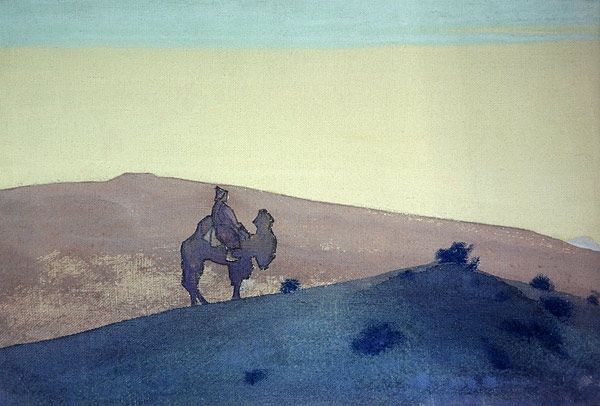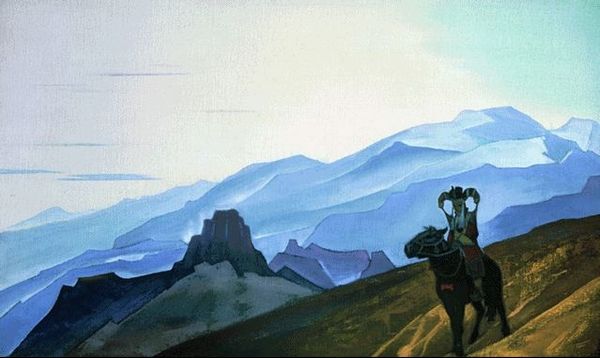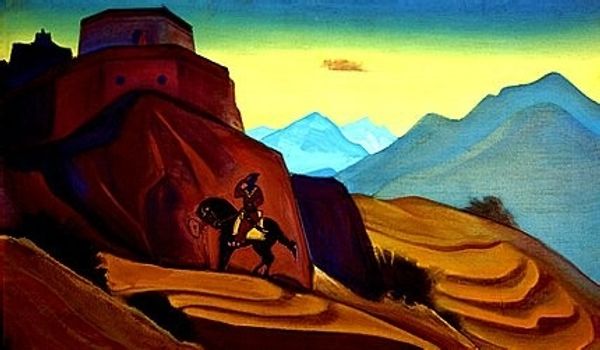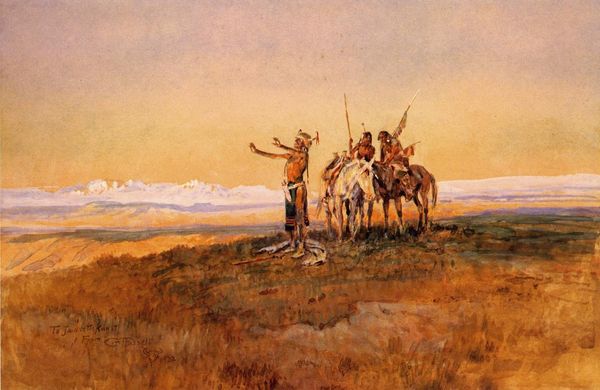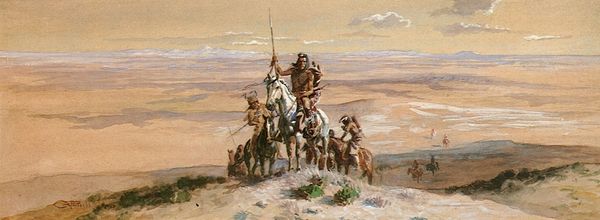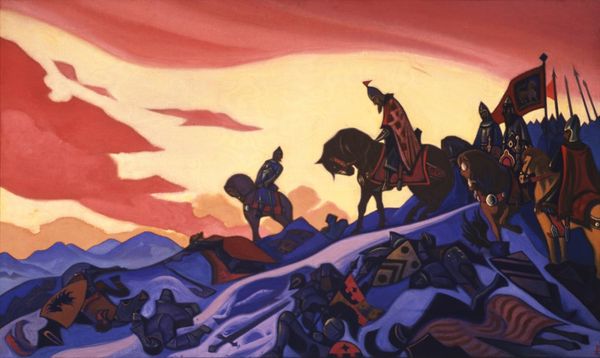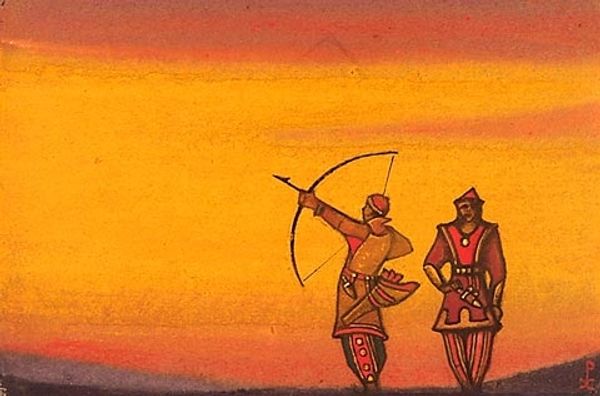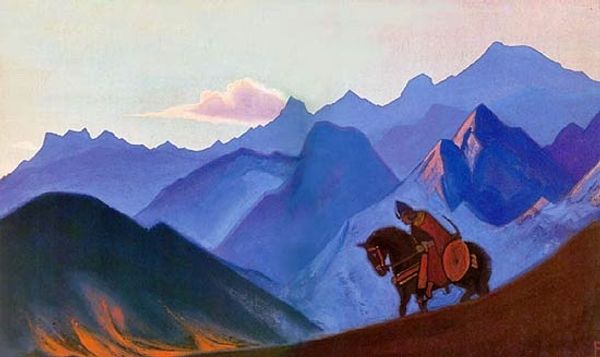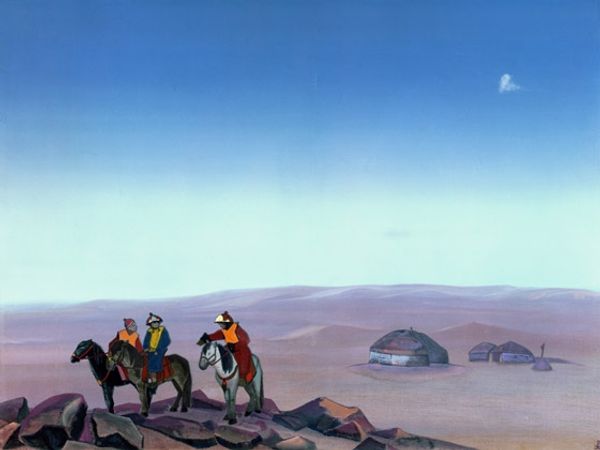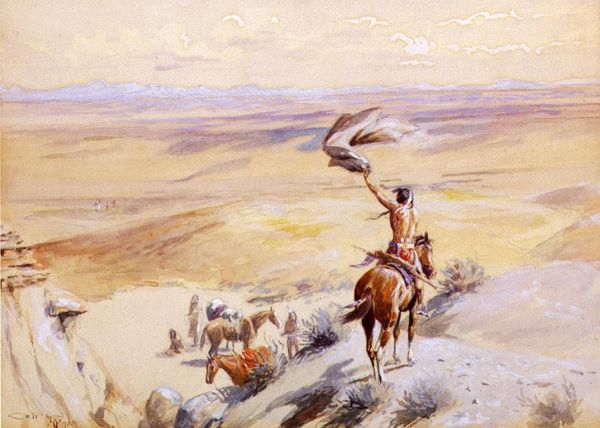
Copyright: Public domain
Curator: Nicholas Roerich's oil painting, "Tombs in the Desert," created in 1930, offers a study in landscape and symbolism. Editor: It hits you, doesn't it? Just this immediate, almost breathless silence. Makes you think of ancient whispers. Curator: The composition is striking. Note the stark contrast between the warm earth tones and the cooler, ethereal sky. Roerich uses color to create a sense of depth and distance. Editor: Right, that almost blinding sky—it's not a welcoming expanse, more like a silent judgement. And the figures, these dark silhouettes, feel burdened, weighed down by the very ground they stand on. Curator: The stylized rendering, a hallmark of modernism infused with realism, simplifies forms, focusing on their essential geometries, and those simplified shapes lend an almost mythical quality to this scene. Consider too Roerich's well known theosophical inclinations, evident in his deployment of symbolism. Editor: It's that combination though, isn’t it? That simplicity mixed with the weight of history or loss. What stories are buried with these figures? Where are they going or from what place did they flee? I can't help imagining entire narratives within these brushstrokes. Curator: I agree. His work is charged with potential meanings. I see it as a study of the sublime—the delicate balance between humanity's small place in the grandeur of the cosmos and the weight of civilization. Editor: Sublimity... exactly! This small canvas isn't just depicting tombs; it’s burying hopes and futures too. Maybe this vision echoes those ancient lamentations that we all feel now in our shared, anxious, present? Curator: A potent interpretation, certainly. Roerich invites each viewer into contemplative experience of stark, existential space. Editor: Beautiful, yes. Ultimately Roerich's vision reminds me how tiny we are in time and place. Powerful, that.
Comments
No comments
Be the first to comment and join the conversation on the ultimate creative platform.
